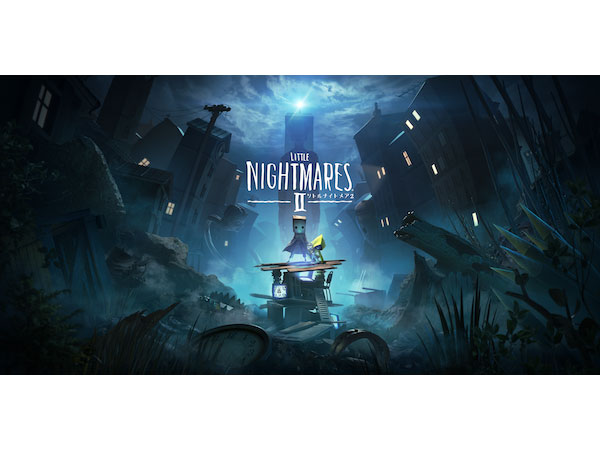Based on a creepy atmospheric world where the player is tiny, and everything is enormous, Little Nightmares is a game that reminds players of what it was like to be a child in a dreadful world. Since Bandai Namco Entertainment Europe produced the puzzle-platformer game in 2017, it has received positive reviews, especially for the atmosphere, graphics, and sound. The title also inspired countless blog posts and videos with theories about the horror game’s story. We recently sat down with Lucas Roussel, the Lead Producer of the Little Nightmares series, who is wrapping up development on Little Nightmares II – to be released on February 10th, 2021 – to talk about the much-anticipated sequel.
Read the previous interview with Lucas
Little Nightmares is Back: What Will Change and What Will Not
Thank you Lucas for joining us for the interview. I wanted to start by congratulating you on how the first Little Nightmares game has become an international hit title since its release in 2017. Can you tell us what the response has been like?
Lucas: We got great feedback. We had people very intrigued by the game before it was released because of its unique look and how it feels when you play the character. Because you’re a kid in a distorted world that is gigantic and not really meant for children, this setting has a particular vibe, and I think many people were intrigued by that.
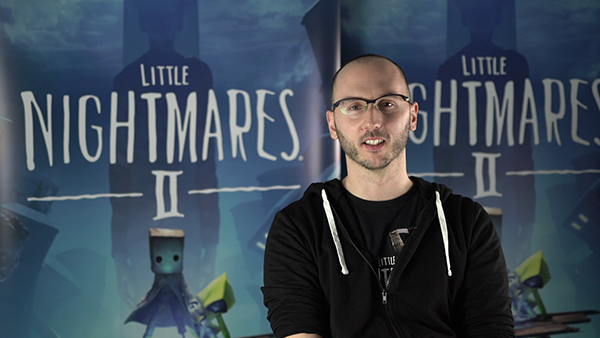
When the game was released, we had a lot of players getting into the new universe. I think this is very important for a new IP (*Characters and other intellectual property) because it’s difficult to get people interested in a new game. We see that many games have a very high peak in terms of sales when they are released. Little Nightmares is more like a game still selling today, even three years after it’s released. I think the reason is that people talk about it. They talk to their friends, and people get to know the game through either the internet or family and friends. So, they get into it even quite late after its release.
When you started planning for the sequel, did you have a clear direction of what the game would be like?
Lucas: We started to discuss Little Nightmares II when we were finishing the development of the first game, but at this stage it was more just informal talks between the team, discussing among other topics “If we can create a second game, what do we want to do?” Of course, the IP is important for Bandai Namco Entertainment Europe, so we started internally to discuss creating a new project without waiting too long because you want to capitalize on the team.
The common point between discussions when the title was not even greenlit was that we wanted to do something more ambitious than the first game. The first game was fairly short in terms of duration. It was exactly what we planned to do, but it was supposed to be a short three-four hour 20 Euro game. For the second game, the starting point was that we wanted a bigger game with a larger scope, longer duration, and more features.
Mono and Six: A Mystery That Unfolds Through Relationship
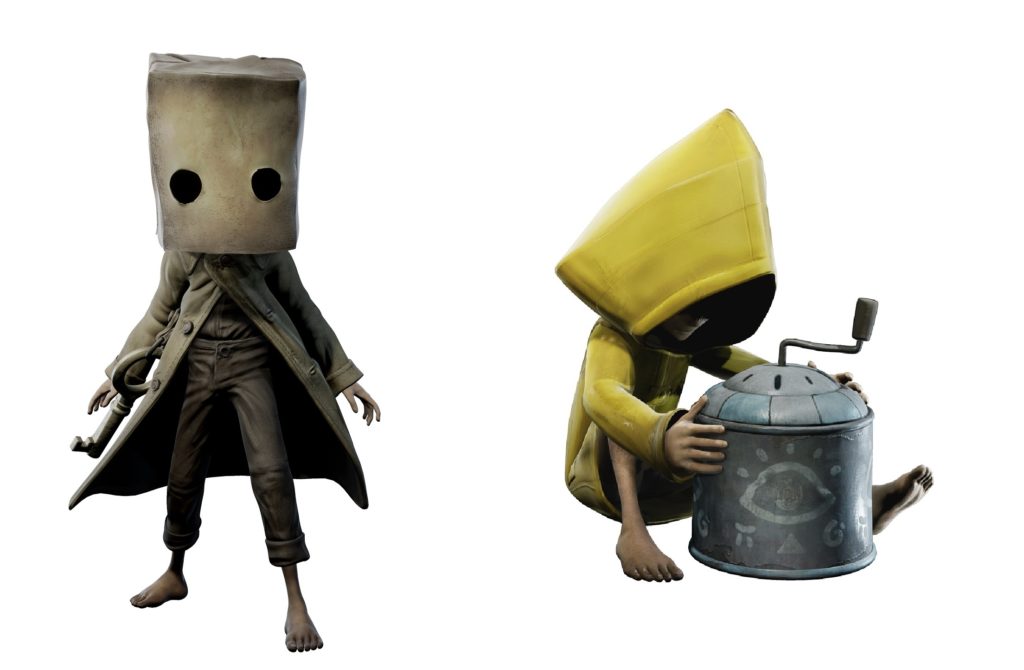
Was there a lot of trial and error in the process of planning the sequel?
Lucas: The idea of having a second character came up very early in the first discussion we had. The first question was; do we want to make it a co-op or not?
As soon as we developed the story, we felt that the story should strongly fit the single-player experience again. If you do co-op, you have to think of your game design with that in mind from A to Z, and we didn’t feel that this was the game we wanted to make. There were enough challenges and exciting things to do with creating a bigger game with more features and with an AI-driven companion that doesn’t require co-op, so quite quickly, we discarded this option in the pre-production stage.
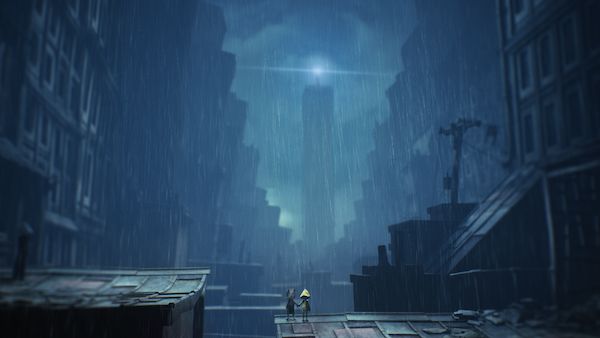
Regarding the characters, we were wondering if Six should be returning from the first game, so we had discussions about having her as the main character. It’s important for Little Nightmares to show that the world is bigger than the Maw, the location of the first game. There are outdoor places like a city, and a hospital. We wanted the players to visit all these places and other places too. We also have many other characters to show as well, and Mono is one of them. For the story we wanted to tell, we realized it was a much better fit to have Mono as a character you play. It was just like a spark. It just became very natural and clear that, in that case, the AI companion should be Six. Thanks to that idea of having a companion, we can tell more of Six’s story because we know her from the first game. At the same time, we can also introduce new heroes, which is very important for us because it’s not only a tale about Six. This is a tale about children in this corrupted world.
Technical Innovation: New Narrative Experiences Made Possible in Little Nightmares II
You mentioned that Little Nightmares II is a more ambitious title in terms of scope and duration. Can you also walk us through some of the enhancements in terms of the visuals and gameplay?
Lucas: The ambition was much higher from just a pure realization perspective. When you see the new environments from Little Nightmares II there’s a clear visual step up. This is something we wanted to bring to the game. Of course, the hardware has also changed over the last four years, helping us develop a more ambitious game from a visual standpoint.
We also wanted to give more of a gameplay perspective to the Little Nightmares game because the first game is pretty much hide-and-sneak. In the second game, you can pick up objects in the environment and use them as weapons. That’s a bit of added action in the recipe that we didn’t have in the first game.
So, would you identify the action element as a key challenge for this sequel? Were there any other key challenges that your team took on?
Lucas: One major change was the introduction of combat to the game. The ability to pick up a weapon, wield it, and hit an enemy is something we had newly introduced. It actually took quite a while to make combat fit with the franchise because Little Nightmares is not a game where players will take a weapon and kill advancing mobs. As a result, we had to find the right balance in sequences where players can hit some enemies, and sequences where they can’t, or that would be very unreasonable for players to do. In these situations, the player would have to outsmart their enemies rather than just directly confront them.
We are also introducing new monsters. You probably noticed that Little Nightmares monsters are very unique. We have the Hunter that has a shotgun that can shoot you within range.
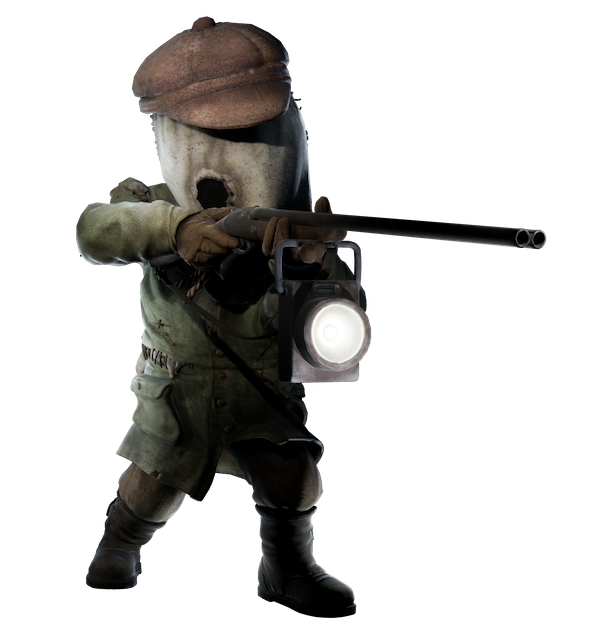

We also have the Teacher who has a very long neck. She can extend her neck at any time. Even though you think you’re hidden somewhere, she might be able to grab you with her neck. Animation-wise, the neck has something like twenty-five bones to animate so that was a huge challenge as well for the animators. And also, for design we had to make sure that the neck is not going through any furniture in the room or other objects, so that was another challenge.
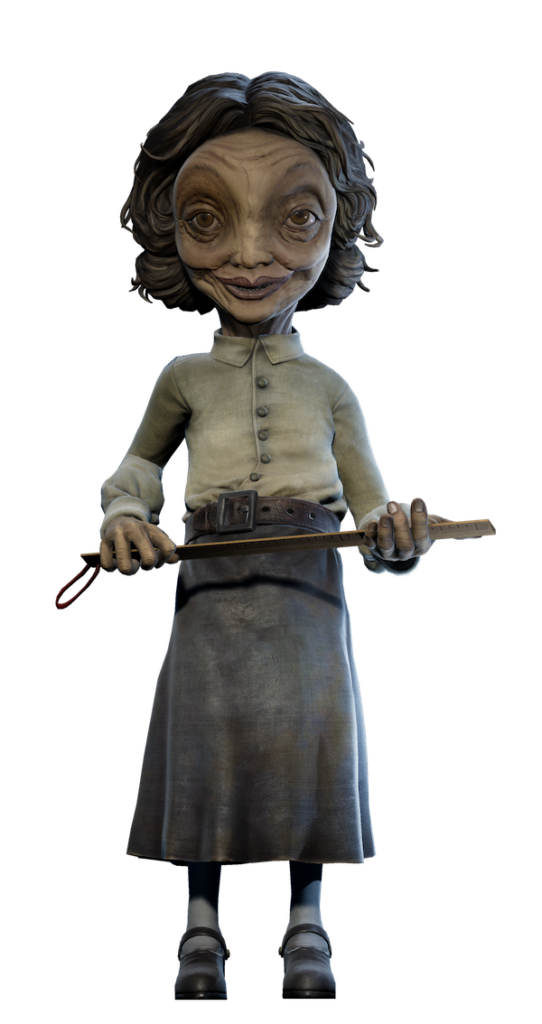
Consider the Doctor when he is crawling on the ceiling. For him, the main challenge for designers was the perspective. He’s really above you so he can catch you, or if he is slightly in the foreground or background, we need to show that with the camera. It was critical to find the right camera for each situation involving the Doctor so that you can really understand whether or not he can grab you.
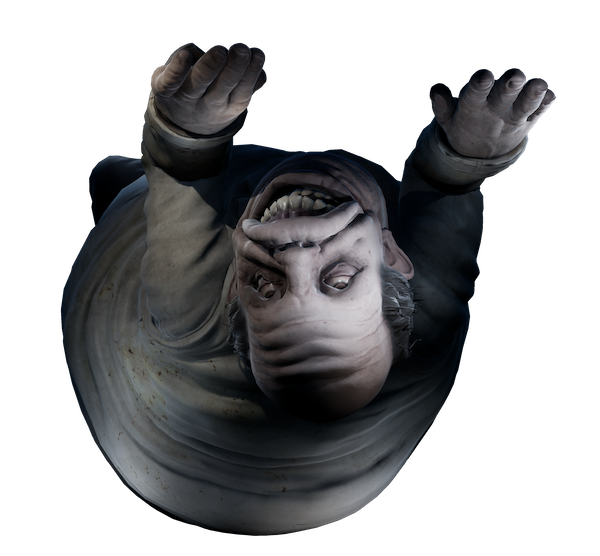
Then we have other enemies, and each of them had its design challenges. Some were easy to solve, others were more complicated. Other than that, AI was probably the biggest challenge.
While a lot has changed from the 1st game, on the other hand, was there anything that you kept in mind for consistency to ensure that the series’ universe is maintained?
Lucas: I would say we were still in the same philosophy about not to hand-hold the player too much. Like with Little Nightmares I , you’re thrown into a game playing a character you have no information about. Similarly, in Little Nightmares II, you will have to learn about Mono during the adventure.
We want players to experiment, imagine what the story is about, what the characters are about, and what happened to Six. We haven’t revealed the end of the story, but we have a lot of theories going around again. People talk about the game, make their own theories, and create something different.
The Key to the Story is Six: Challenges of Game Development Using AI
The player controls Mono, and then we have Six, an AI character in the sequel. I’m sure many people are excited about this and how it enhances the story and experience.
Lucas: From the story perspective, this really changes the way you make a game. Players don’t see the story only from a single perspective; now they see it from two perspectives. At some point without spoiling too much, we’ve mentioned a little in some footage we’ve made public; while Six will accompany you most of the time, there will be moments where you will be alone to face the dangers surrounding you. When you start the game, you’re not with her. You find her after a couple of puzzles and adventures and then at some point you will be separated again. After that, you’ll be reunited, so the story is an emotional rollercoaster. I think this is one of the most substantial aspects of the game. Maybe it also helps players; those who are new to Little Nightmares and are a bit afraid because there are no words in the game. There’s still going to be a layer of things for niche fans to interpret and talk about on the internet, but I would say maybe it’s going to be a bit more accessible for the larger audience.
Does this dynamic of having two characters come into play with the game’s puzzle-solving element as well?
Lucas: Having two characters opens up a new perspective for gameplay and it changes the way you solve puzzles. It was one of our challenges to decide whether Six should be very autonomous or if players would have to ask her to do things. Basically, we had to prototype both scenarios to see which one was better. But at the end of the day, we know Six’s personality from the first game, so we needed to create an AI character that is faithful to our image of Six from the original game. This is why we’ve opted to have her function pretty autonomously. She doesn’t wait for someone to tell her what to do because she is a very independent young lady. For example, she will interact with the fuses, and she will check her things. When you get close to a point of interest, you learn that she can hoist you to a certain point and things like that.
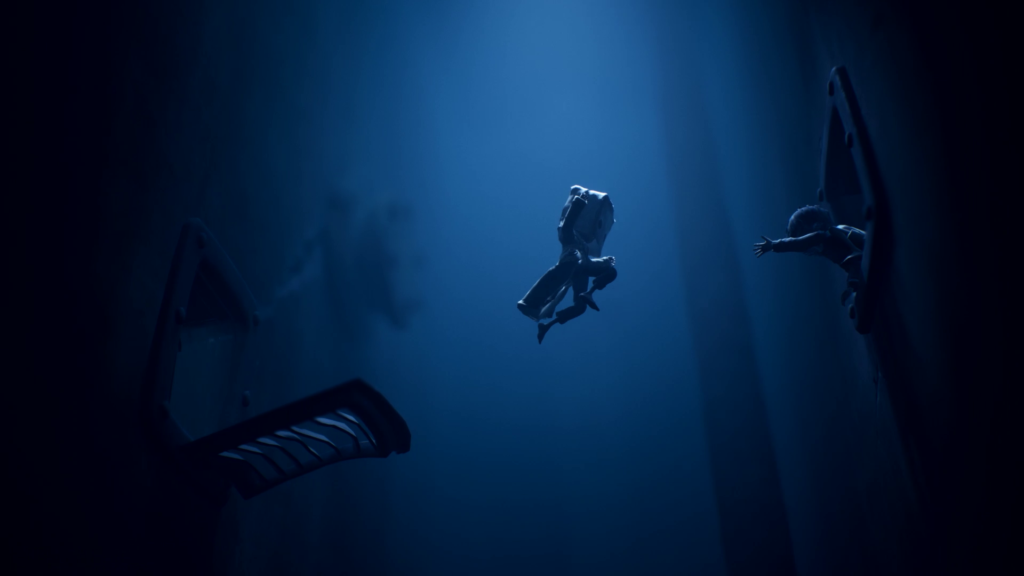
For the AI-driven Six, are there any particular parts in her movement or behavior that your team spent a lot of time perfecting through iterations to get it just right?
Lucas: A lot of animation was created for the cooperation between the characters. But I would say Six was mainly a technical challenge because we know how hard it is to make a game with an AI companion. There are not many AI-driven games out there for a good reason. We definitely had our challenges with Six getting stuck in the levels and being too passive or doing too much. At some point, she could almost solve a puzzle by herself. I mean, there was a lot of discussion with the team to see how we could solve these issues. At the end of the day, we’re happy with how the AI works. Obviously, we can always spend more time making adjustments, but I think what we have now in the game is really what we wanted.
What was also very complex in terms of development was having Six’s AI interpret the player’s actions as well as other AI enemies’ actions. Having several AI driven characters in the same room and having the player doing things in the same room require us to be extremely flexible with Six’s AI, depending on what’s going on. She has to react quickly and look natural like a normal kid would. So, there’s the question of will she help you or will she hide? Because she might feel that there’s too much danger. There really was a lot of back-and-forth between the design team and AI team about the layout of the room and the AI for each character in the room and what they should be doing. What could be considered barrier or blocked situations? Because what you want to avoid is having a character being idle in the middle of the room when there’s danger all around. That was a big development challenge.
How was it working during the pandemic this year? Was there a significant impact on production, and how did you guys overcome that situation?
Lucas: I would say the impact was moderate. Luckily for us, it was more at the end of the production process where everyone knew clearly what they had to do. It could have been more complicated if the pandemic was at the beginning of production where you need a lot of communication.
With that said, the pandemic has impacted us on the communications side; having calls every day, all the time, and not being able to travel. I’m located in France and the development team is located in Sweden, so I usually would be spending quite a lot of time in Sweden. I had to do my job without being with the team, but the team was also in a situation where everyone was working from home so it was challenging for everyone.
Was there a turning point during production or a specific moment when you realized that what your team was doing would really work well?
Lucas: We’ve had our challenges in this production from the technical and direction points-of-view.. At one point, we had different mechanics in the game that were not working well and not polished, which I think was very frustrating for everyone because we couldn’t feel what the end product would be. At some point we decided to make a vertical slice on a level.
It was very short slice, but it provided prospective and everyone was happy about the quality. There was a huge boost in motivation with everyone being able to see what the end result could be like. We could make that on a small portion of the game and that means we could do that for the whole game. Little Nightmares is a very artistic game but the art in development comes late in the second phase. As a result, for quite a long time you play a build that has very little heart in it. Art is the soul of the game and it makes such a dramatic difference when you start seeing it coming into the game. We really felt that we could see what everyone is working so hard for and we’ll see what we are going to get at the end.
What are you most proud of in terms of the sequel?
Lucas: I’m most proud of the real step up between Little Nightmares I and II. That was an objective and something very important for us to achieve. The new one has so many new features that are complex to develop and you can see that there’s a big difference between the two titles.
Of course, the team is more experienced now. That’s what I think we are most proud of.
The Potential of Little Nightmares Goes Beyond the World of Games
I’ve heard that you have worked on games in Japan during your career. You’re currently working at Bandai Namco Entertainment Europe. Can you tell us a little about your experience working with Bandai Namco Entertainment Europe?
Lucas: Yes, I’ve been working for Bandai Namco for quite a while now, approximately 10 years. I have done a couple of missions in Japan to close projects for Tekken 6, Tekken Tag Tournament 2, and also Naruto Shippuden Ultimate Ninja 2 at CC2 (*a Japanese video game development studio) in Fukuoka. These were great missions.
At Bandai Namco Entertainment Europe, we’ve got a lot of responsibility as we probably have fewer staff than in Japan where our company HQ is located. So, we get a lot of freedom and at the same time some pressure. When the game succeeds, it’s very rewarding.
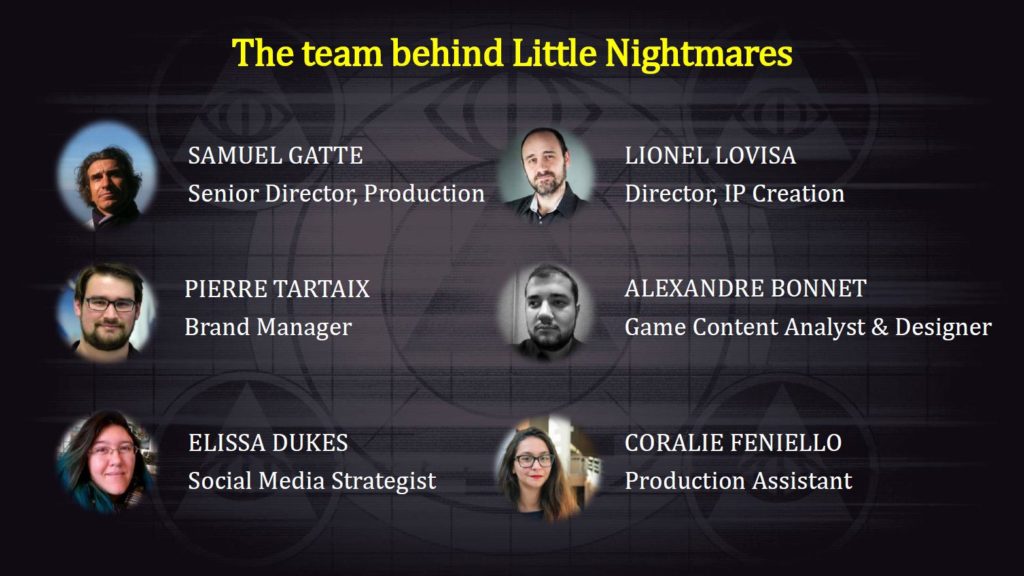
We’re also working with an external studio. We really have to find the right balance here, giving staff the right level of freedom so that they can keep on being very creative. But at the same time, we decide where we want to take the IP and the development team needs to understand that. I think luckily enough, we’ve always been in alignment. There was a very open discussion and we were able to make sure everyone was okay with the vision we need to bring for the future of the IP.
What are some of the things you especially keep in mind when growing an IP as a series?
Lucas: It’s very challenging when you work on an IP. You know where you want to lead your IP but sometimes, you’re also facing different/new challenges along the way so you always have to readjust and say that “that’s what we want to do, and that we cannot compromise.” Alternatively, we might say that something is possibly less important, therefore we can compromise a little.
I think we are very in line with what we want to do with the IP. The scope of Little Nightmares II, the game’s duration, and the kinds of new mechanics we brought to the game are really what we wanted for the sequel. At the same time, we know that this time around people will have higher expectations. When a new IP is working well, people will be very optimistic about it. But when you release a sequel, a lot of people know you, and they will be less forgiving if you do not meet their expectations. I expect fans and media to be more demanding on Little Nightmares II than they were for Little Nightmares I.
So, with the success of Little Nightmares I, the bar is now set high and expectations are high but moving forward, do you have any plans for the series, and are there any other projects that you are working on right now?
Lucas: We have different kinds of projects in consideration. We have already released a mobile game, Very Little Nightmares, on IOS and Android. We also have other transmedia projects in on-going discussions.
Unfortunately, we can’t reveal too much about what we’re working on but there’s a clear wish to expand this IP and its universe; we believe the Little Nightmares universe is fascinating to explore. There’s a lot of stories to tell and it can be done through different kinds of media, not only video games. That’s what is very interesting now.
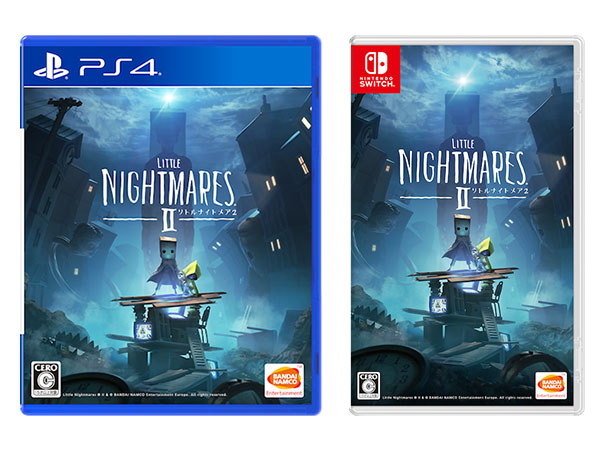
Little Nightmares Official Information
[Official Website] [Twitter]
Little Nightmares ® II & © BANDAI NAMCO Entertainment Europe. All rights reserved.
Christopher Takagi
Interpreter/translator/writer with a focus in the field of anime, games and VFX.
Winner of JACI Simultaneous Interpreting Grand Prix 2019.



